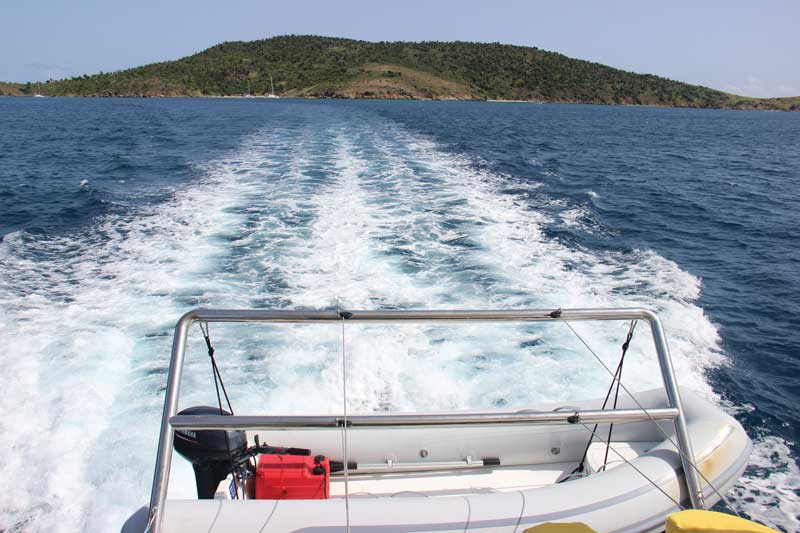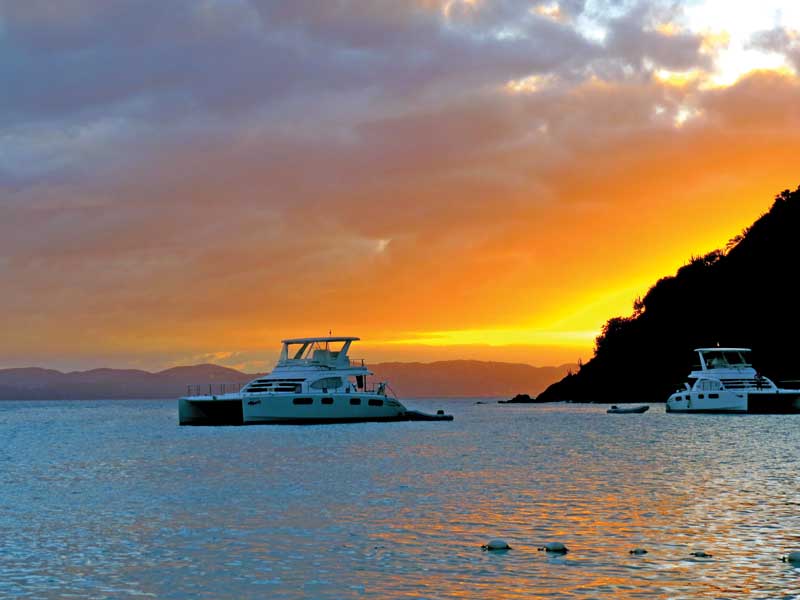Over the last few months we’ve been running a three-part series on beginning chartering. Part I included tips on managing the decisions and bureaucracy of charter setup, and Part II focused on how to embrace a powercat, which is most likely the type of boat you’ll have on a weeklong charter in another country.

In Part III, we’ll describe the first day of charter which is always chaotic and never easy. It’s a long day of hurry-up-and-wait, bored kids, and disorganized crew members eagerly waiting for their vacation to start. For a skipper, it’s usually the hardest day of the entire process.
The first day of charter is all about hard work and long hours. Your crew may be ready for rum drinks and sunshine, but you’ll be busy with tech and chart briefings, paperwork, and deciding on a safe anchorage for the first night. It’s best to come armed with a checklist and low expectations. The checklist I can help with; the expectations are up to you.
The Checklist
Check in with the base early on the first day and ask where to stow your luggage where it will be out of the way but also out of the sun. Bring your ID and whatever file you have on the boat already, including your crew list.
Secure contact information for the office and cell phones for key personnel because if things occur after hours, you’ll need help.
Keep your crew busy and away from base personnel who are stretched thin on changeover day. You’re the leader of your group so take charge.
Ask your crew to fill in any last-minute provisioning needs even if you took the provisioning option via the charter company. This ensures you’ll have plenty of snacks and your crew will have a focus.
Attend the chart briefing if there is one. More companies now put the chart briefing online as a video. I’m not a fan. There’s no substitute for local knowledge, so watch the video before you arrive but then bring a list of questions to ask the base personnel.

Get a weather forecast and ask about where/how you can find updated weather throughout the week. Ask about connectivity along the cruising grounds. That will tell you whether you can make a call back to the base for assistance or download a new weather forecast.
Attend the tech briefing with your first mate. This will teach you about the boat. Even if there was an online video, a base tech rep will walk you through your particular vessel in detail. They know these boats inside out, so ask questions and listen to what they say and also what they don’t say because that’s a clue to the boat’s particular issues. If they seem wiggly on a battery issue, probe for more details.
Bring your first mate (but not the whole crew) to both of the briefings above and record them on your phone with both audio and video. You’ll be able to refer back later when you have no idea where the manifolds are to switch the freshwater tanks or how to start the generator, for example.
Check the water and fuel levels even if the base says the boat is full. Learn to operate the genset and the watermaker if there is one. Ask that the dinghy be inflated and that the outboard is tested right in front of you. Find the dinghy pump and outboard kill switch key.
Test the VHF and make sure the chartplotter is in feet and English. Test the galley stove and oven and find the location of the propane tank. Lift it to see if it’s full and find the solenoid switch if there is one.
Lay eyes on safety equipment including fire extinguishers, fire blankets, bailers, buckets, extra line, PFDs, and tools. Take your crew on a walkthrough of the boat’s safety items once all is settled and before you head out.

Don’t take no for an answer. If a system like a bilge pump or generator isn’t working, press the issue until it’s resolved. Good enough isn’t good enough once you’re out there.
Don’t come to the base tired or hungover on the first day, which is long and will be exhausting. When it’s time to leave, don’t be offended if the charter company insists on driving you out of the marina. It’s their boat and once they take the wheel, you have zero liability.
Start the week with a short and manageable first day even if that means overnighting in the marina. Everyone needs to learn the boat and racing to an anchorage as it gets dark on the first evening is tough, so pace yourself.
Patience is key
Have patience with everyone—the base personnel are scrambling, your crew including your kids are probably bored, and you’re stressed with the million details you have to address and memorize. It’ll all get easier once you’re out there, and you’ll have a terrific week in paradise.
By Zuzana Prochazka
This concludes PropTalk’s three-part fall charter series. To catch up on previous articles, check out:
Easy Chartering Part One: Decision Making and Paperwork
Easy Chartering Part Two: Tips for Managing a Charter Powercat